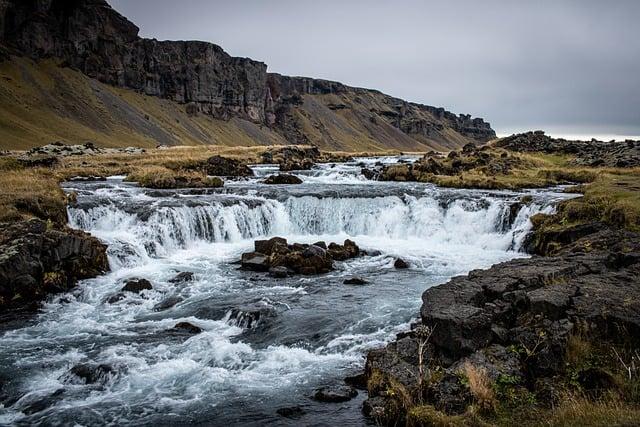- Introduction
- What is Project Drawdown?
- Climate Solutions Researched by Project Drawdown
- How Project Drawdown Tackles Climate Change
- The Impact and Progress of Project Drawdown
- Conclusion
- FAQs
- References
Introduction
Project Drawdown has emerged as one of the leading organizations and blueprints in the fight against climate change. As the urgency to mitigate the harmful effects of climate change grows, people are increasingly looking towards scientifically backed strategies to reduce global carbon emissions. Project Drawdown offers a list of scalable solutions to help curb this planetary crisis. In this article, we’ll explore what Project Drawdown stands for, some of the key solutions it proposes, and what progress has been made toward these goals.
We will start by defining Project Drawdown to understand its mission more clearly. Then, we'll explore some of the climate solutions researched by this initiative. Following that, we'll dive into how these proposed solutions can be implemented to combat climate change. We'll also analyze Drawdown’s impact so far. Finally, we'll conclude with some frequently asked questions about Project Drawdown.
What is Project Drawdown?

(Image: Pixabay/@2466146)
At its core, Project Drawdown refers to a global movement aimed at reducing atmospheric greenhouse gases. Started in 2014 by environmentalist Paul Hawken, Project Drawdown presents a detailed plan, not just for stabilizing the planet’s temperatures but reversing global warming altogether. The term "drawdown" itself refers to the point when the levels of greenhouse gases in the atmosphere start declining, meaning the amount emitting is less than what's being removed or absorbed by Earth's systems.
The team of interdisciplinary researchers involved in the project focuses on finding scientifically grounded, executable solutions that could create significant changes. Unlike broad discussions around emission mitigation, Project Drawdown identifies realistic actions prioritized based on their efficacy, cost-efficiency, and immediacy of implementation. The research largely informs non-governmental organizations, governments, and businesses globally to adopt environmentally sustainable practices.
Importantly, Project Drawdown also operates under an open-access model, publicizing their findings for free. It helps individuals, organizations, and policymakers implement these solutions on every possible level—whether local, national, or global. But how exactly do they break down their proposal for tackling climate change? That brings us directly to the next section discussing specific climate solutions.
Climate Solutions Researched by Project Drawdown

(Image: Pixabay/@Leonhard_Niederwimmer)
The cornerstone of Project Drawdown lies in its comprehensive inventory of climate change solutions. These solutions are categorized into various sectors such as energy, food, agriculture, transportation, buildings, and materials. Here, we will cover a few of these sectors in depth:
1. Renewable Energy
One of Project Drawdown's flagship sectors is renewable energy. Specifically, it encourages a major shift away from fossil fuels and pushes for solar, wind, geothermal, and other clean energy sources. The research indicates that a rapid expansion in renewable energy technologies could account for 30% or more of the emissions reductions we need globally to meet climate goals.
The Project also delves into innovation in decentralized energy systems, solar installations for individual homes, and battery improvements, which would make the renewable grid more efficient.
2. Reducing Food Waste
Another global issue tackled by Project Drawdown is food waste. Unused food, often discarded due to inefficiencies in storage or oversupply, is a significant contributor to methane gas emissions. Project Drawdown suggests various methods like better waste management, improving refrigeration systems globally, and redistributing imperfect produce.
3. Afforestation and Reforestation
Able to absorb carbon dioxide naturally, forests play a crucial role in fighting climate change. Project Drawdown emphasizes models for reforestation and afforestation (planting new forests) to draw down emissions from the atmosphere. Protecting existing forests from further degradation is another prominent strategy.
4. Efficient Buildings
The energy used in buildings contributes significantly to global warming. By utilizing high-efficiency insulation, LED lighting, and smart technology to control heating, cooling, and electricity in buildings, the potential to dramatically reduce energy use exists. Project Drawdown outlines detailed design strategies for developers and homeowners alike to help minimize a building's carbon footprint.
How Project Drawdown Tackles Climate Change

(Image: Pixabay/@makabera)
Project Drawdown approaches climate change through a targeted focus on actionable, large-scale solutions. The central tenet of their research purports that it's actually possible to "draw down" the amount of carbon in our atmosphere by implementing climate-positive solutions today. This doesn't mean merely slowing climate change but actually reversing it with scalable solutions.
There are three overarching categories of solutions based on their end goal: (1) Reducing the need for excess energy generation, (2) Sequestering carbon already in the atmosphere, and (3) Replacing traditional carbon-heavy systems with low-carbon technologies.
1. Reduction of Carbon Emissions
The idea behind reducing carbon emissions includes measures such as expanding renewable energy, changing industrial processes, enhancing transportation efficiency, and promoting energy-efficient technologies across industries. This solution base focuses sharply on preventing the continual release of CO₂ into the atmosphere.
2. Carbon Sequestration
Carbon sequestration solutions in Project Drawdown focus on ways to capture and store atmospheric carbon in various forms. Notably, initiatives like agroforestry, reforestation, and composting directly sequester carbon by increasing soil health and forest growth. Similar methodologies include advancing direct air capture innovations, where machines could collect CO₂ from the air. Once captured, carbon may be stored safely underground or reused in industrial applications.
3. Systematic Replacement
The last category involves turning adopted reliance on fossil-fuel reliant systems into less resource-intensive processes. Turbines generating power from coal and natural gas can be replaced by renewable wind and solar alternatives. Conventional agriculture dependent on nitrogen-based fertilizers is countered by promoting regenerative organic farming that enriches soil health.
The Impact and Progress of Project Drawdown

(Image: Pixabay/@Tumisu)
Since its inception, Project Drawdown has laid the groundwork for understanding the path to reversing climate change. What was a broadly theoretical approach in the early days has slowly transformed into tangible progress across different countries and sectors. Several regions around the world have taken major steps in implementing Drawdown’s solutions. For instance, cities have adopted solar power programs, large corporations are committing to zero-waste policies on food, and indigenous communities are revitalizing degraded land through afforestation projects.
Corporations like Google and Microsoft have been involved in partnerships adopting Drawdown-inspired strategies for eliminating carbon footprints. Additionally, collaborations between various think tanks, universities, and governmental bodies have led to further development on specific issues like soil carbon enhancement and electrification in developing economies.
The significance of Project Drawdown isn’t solely based on its scientific research, but also its public accessibility. Making their research easily understandable and available for stakeholders worldwide has fostered collaborative efforts, ensuring the project’s vision reaches beyond the academic or policy realm and into everyday life.
Conclusion
In summary, Project Drawdown offers structured solutions aimed at reversing the trajectory of climate change. By leveraging a combination of strategies like clean energy solutions, reduction in food waste, reforestation, and technological innovations, Drawdown gives clear guidelines for what needs to happen. Each solution they propose holds the promise of reducing carbon emissions or sequestering atmospheric carbon back into the Earth.
With ongoing research, community engagement, and political support, the vision offered by Project Drawdown continues to act as a guiding framework for organizations globally. The next decade is critical to implementing these solutions on a larger scale, and the fate of the planet’s health depends strongly on how widely – and effectively – these strategies are adopted.
FAQs
What exactly is meant by “Drawdown”?
Drawdown represents the moment when the levels of greenhouse gases in the atmosphere stop climbing and begin to steadily decline. Essentially, it's the point at which collective efforts lead to a net decrease of carbon from Earth's atmosphere.
Is Project Drawdown only focused on renewable energy?
No, while renewable energy plays a significant role within Project Drawdown’s strategy, it supports a broad series of solutions ranging from shifting agricultural practices to systemic waste reduction, improved materials management, and ecosystem restoration.
How does Project Drawdown get its data?
Project Drawdown utilizes an interdisciplinary approach by bringing together experts from fields like climatology, engineering, economics, and agriculture. They combine peer-reviewed studies, industry reports, and fieldwork to generate the most accurate models of climate solutions.
How can individuals contribute to Project Drawdown’s goals?
Individuals can make choices that align with Drawdown’s priorities, like reducing personal carbon footprints, advocating for renewable energy adoption at local levels, participating in community greening efforts, and contributing to food waste reduction. There are many small-scale changes that compound over time.

